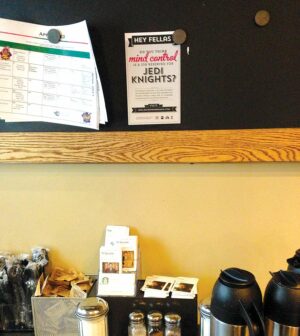Design Research: Introduction
An overview of design research.
If you want to design a product, service, or system that people will use, you must start with research. Who are the people? What are their needs? What’s keeping them from getting what they want and need? Do they suffer from physical or cognitive limitations? How can designers help them achieve their goals?
When done right, design research gives designers insights into people’s lives that point the way toward solutions.
Research
No, you do not need to wear a lab coat to do research. Nor do you have to take classes in the sciences, have worn a hazmat suit, or need to use beakers, test tubes, or flasks. Research is more about the process than the person. If you have good processes and apply them consistently, then you can do solid research.
For our purposes, we will use a basic but very effective definition for research:
Research is a systematic inquiry that produces new knowledge.
Definition synthesized from a wide range of sources.
If you initiate a process and repeat that process consistently, that’s systematic. It has been planned and measured with purpose. If that process produces new knowledge—something you (or ideally most other people) don’t know—you’re onto something.
So, research can be conducted to learn about Tsetse flies, mobile device usage, brand effectiveness, shampoo preferences, or just about anything else. The process decides just how effective and productive that research will be.
How is Design Research Conducted?
British scholar and writer Sir Christopher Frayling addressed research in art and design in an article of the same name, proposing that this research can be operated in three ways:
Research for Design
The kind of research that one does to gather knowledge to inform the shape of a design.

An interior designer designing spaces inside a new community recreation center may read case studies on previously constructed recreation centers to learn about the success of the design decisions that went into their completion. They may also conduct interviews in neighborhoods surrounding the new center to determine peoples’ preferences and needs. This research would inform the design of the inside of the community recreation center. Without engaging the population who would use the new building for the design of the space, opportunities to ensure its relevance may be missed.
Research into Design
Inspecting design itself—its processes, outcomes, and those who design.

A communication designer may examine a poster series on water conservation to determine how effectively its imagery and messaging connect with viewers to achieve its goals. This research could involve talking with people who viewed the poster series to determine if it affected their decision-making. It could also include examining if posters were placed inside or outside buildings to learn if placement affected engagement. This research into design would help inform future poster campaigns or even if posters would be an effective media when communicating water conservation messages.
Research Through Design
Knowledge gained through participating in the act of designing.
A service designer developing steps for ordering coffee at a new quick-service coffee shop may conduct research through design by testing a new role-playing technique for designing the service. Through operating this technique, the designer may learn that role-playing more clearly reveals areas for improvement in the coffee ordering service design than only drawing it up on a whiteboard.

Each of these three approaches provides some definition that helps to give shape to design research. While they are by no means definitive, they serve as a starting place for further discussion on how design research can be operated. In each of these cases, design research grounds its approaches in factual evidence based on the research of others and/or on first-hand field research. After the problem context is more clearly understood and defined, design researchers generate solutions for implementation, testing, iteration, and refinement. Where and when research takes place in a project is contingent upon the focus of the design research project itself.
Design Research Continues to be (re)Defined
These brief examples of design research merely nick the surface of what design research is and what it can be. Much discussion is taking place between researchers, educators, and practitioners on how design research should be conducted and if it should be divided into basic, applied, and clinical research, much like in medicine. Suffice it to say these debates will likely continue for a long time but also that the dialogue is important. Society has much to gain from studying the things humans make to understand their effects better.
Design Research Projects
A few examples of design research in action.
What will it take for customers to fly again? – Bridgeable